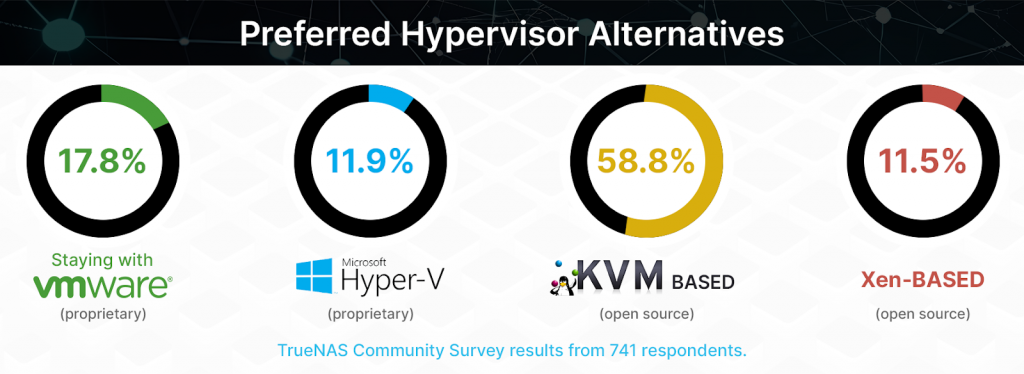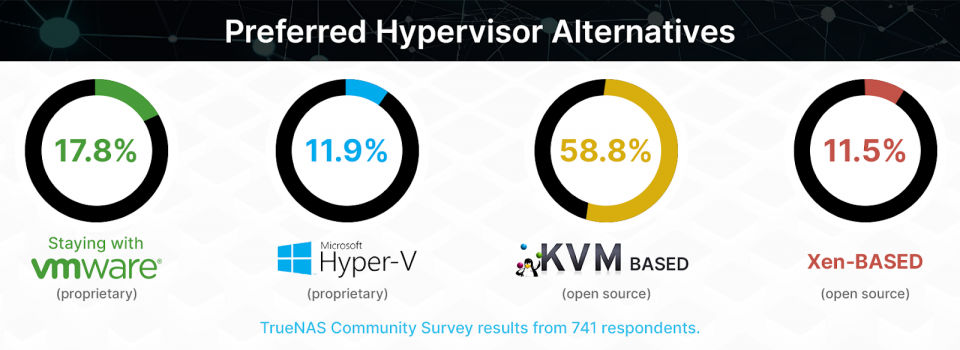Feedback from Over 700 Respondents Highlights Leading vSphere Replacements within the TrueNAS Open Storage Community
iXsystems recently conducted a community survey with 741 respondents that revealed which hypervisors VMware customers are considering most as they seek alternative options to maintain business operations. Considering TrueNAS is designed to provide storage for any hypervisor of choice, the survey aimed to capture insights on user preferences for non-VMware hypervisors in this next era.
With the move by many organizations away from Broadcom as the company shifts its strategy for VMware post-acquisition, users have begun seeking alternatives in an effort to avoid steep price increases and the end of VMware’s free ESXi hypervisor. In addition to cost advantages, Open Source software infrastructure is easy to evaluate with community engagement and documentation available, and without need for special hardware or specific software licenses.

For those who can afford it, some will continue with VMware. For the majority who cannot, or have the flexibility to opt out of an uncertain future in the ecosystem, there are a range of options including Microsoft Hyper-V and several solutions based on either KVM or Xen, which are Open Source. Many are considering Open Source alternatives with permissive licenses and collaborative business models that provide organizations with the confidence that they will not be locked into or out of the technology in the future.
All major commercial and open source choices were presented in the survey. According to the results, 17.8% of respondents are considering sticking with VMware despite its higher cost. The top alternatives identified by the survey were based on KVM, or the “Kernel-based Virtual Machine”, which is a free and open-source module for the Linux kernel that allows the Linux kernel to act as a hypervisor. Based on Linux, KVM is the integrated hypervisor for TrueNAS. 58.8% of respondents are considering KVM-based alternatives, contrasting with deployments of other hypervisors such as Hyper-V (11.9%) and Xen-based hypervisors, including XCP-ng (11.5%).
“Open-source Linux has become the dominant operating system by far, just about everywhere. It includes KVM (hypervisor), Kubernetes, containers, and more.” states Marc Staimer, President, Dragon Slayer Consulting. “Alternative open source hypervisors have proven to be strong viable alternatives, most of which are based on Linux KVM, just as open-source storage alternatives such as TrueNAS have become very viable options to VMware vSAN. Again, most of those alternatives are Linux based.”




